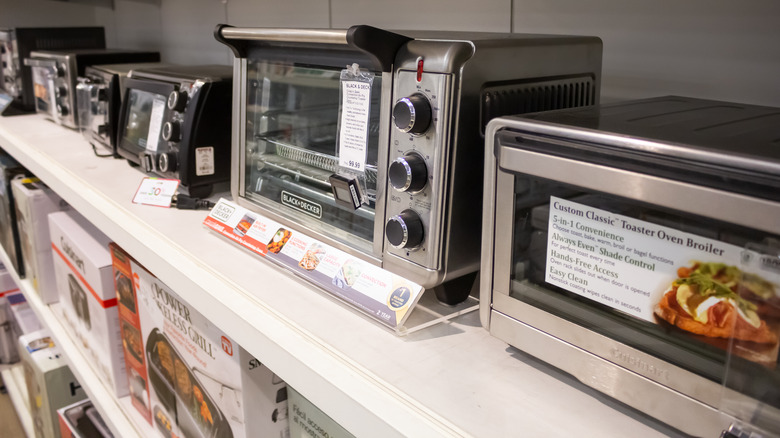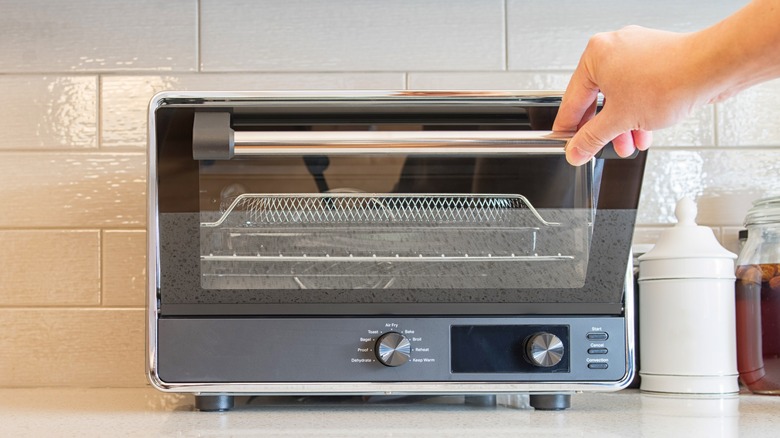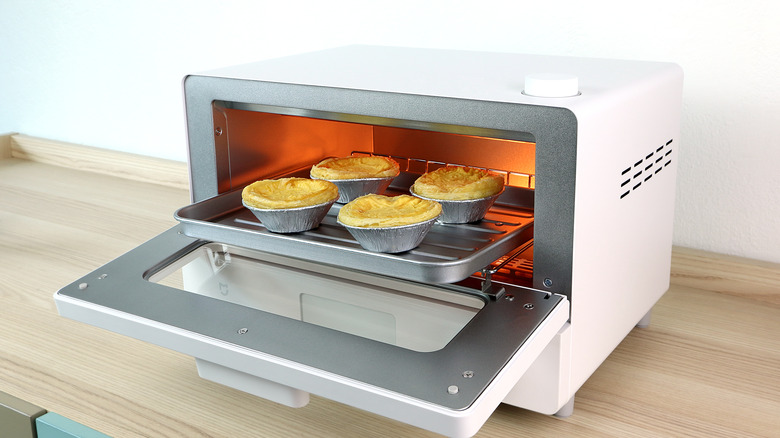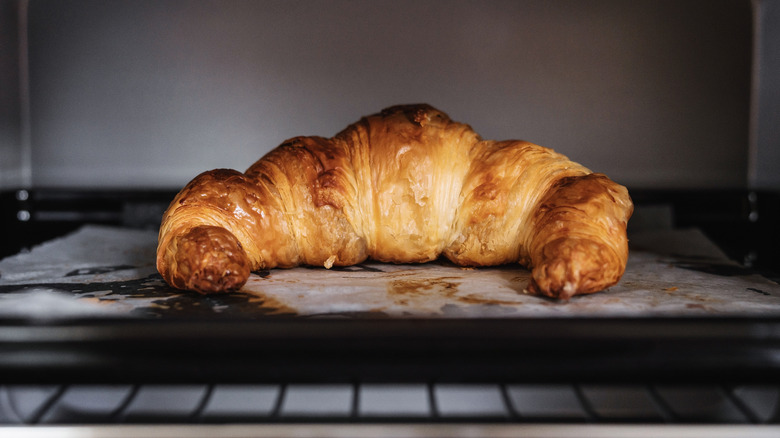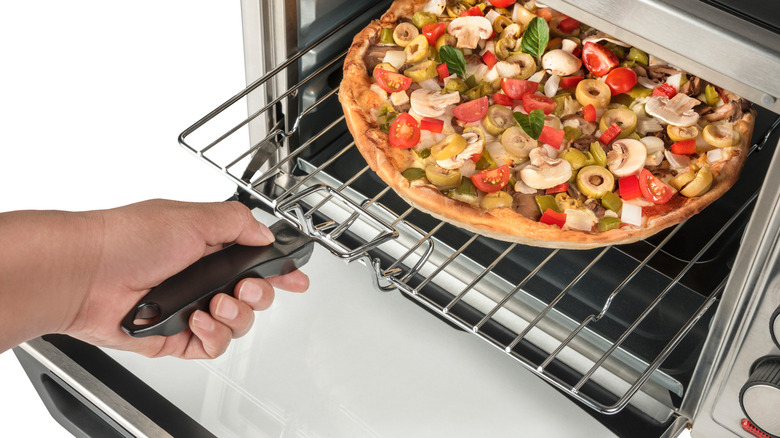Is There A Difference Between Convection Ovens And Toaster Ovens?
When you want to reheat leftovers or cook a small portion without heating up the rest of your house by turning on your oven, using countertop cookware is the way to go. Most commonly referred to as a toaster oven, these square or rectangular-shaped small appliances are often compact, but mighty when it comes to their heating ability. They can cook things from reheating pizza to a serving of fries, or a single chicken breast quickly.
In the past several years, countertop convection ovens have made their way to the small kitchen appliance aisle of retail stores — and although they look similar to toaster ovens, they're not quite the same as a toaster oven. While both appliances are ideal for cooking smaller portioned food and reheating items, there's one main difference when it comes to toaster ovens and convection ovens. That difference comes down to the way each machine heats food.
What is a convection oven?
Whether you've seen countertop convection ovens at the store or online, or your oven has a convection setting, you may be aware of the term, but not necessarily how the convection process works. No matter how big, or small, a convection oven is, cooking items in an oven via convection means that the oven has both an exhaust and a fan that circulates hot air in the space and then moves it out of the oven through a vent.
It may not seem like a big deal, but moving the hot air around like this ensures that the food is surrounded by the same amount of heat — so it cooks food evenly. Convection baking also means food is cooked faster, since the hot air is blowing directly onto the food, instead of the heat coming from a single source, like a heating coil at the top or bottom of conventional ovens and toaster ovens. Because the food takes less time to cook, convection ovens are often more energy efficient.
How toaster ovens work
Toaster ovens operate in a similar way to traditional ovens, by cooking or warming food from a single heating point rather than circulating heat, like convection ovens. Usually, the heat is radiated from a small coil located at the top and bottom of the oven. This method will get the job of heating food done all the way through, but the food won't be cooked as evenly as it would if heated in a convection oven.
Since they're smaller in size than traditional ovens, toaster ovens use less energy than regular ovens. And, depending on the model of the toaster oven, it may have a variety of cook settings, including a bake, defrost, broiler, and toast setting. The bake and broiler settings work in the same way that regular ovens work, the defrost setting will use a low temperature to safely defrost frozen food, and the toast setting works like a countertop toaster. Many toaster ovens now offer an additional setting — convection — offering you the best of both worlds.
What to make in a convection oven
Since there are distinct advantages to both convection and toaster ovens, if you own a toaster oven that also cooks via convection, or if you're trying to decide between purchasing a toaster or convection oven, it's important to understand what types of foods you should cook on each setting or in each oven type. The convection oven or convection setting is ideal for when you want a crispy outer layer on your food, such as when you're roasting meat or vegetables, or to achieve a flaky, golden crust on pastries like croissants or handheld pies.
The convection oven can also be the key to baking the perfect batch of cookies with crispy edges, as long as you're able to bake them on a flat baking sheet without a lip, which can stop the airflow from reaching the cookies. Although convection cooking is good for a number of foods, the circulating hot air isn't ideal for cooking bread, cakes, custards, or souffle. This is because the hot air can dry out items that cook from a flour-based batter and cause the airy texture of custard or souffle to fall or rise in an asymmetrical way.
When to use a toaster oven
If you need to cook smaller portions of foods that don't cook well in a convection oven, then save those more delicate foods, bread, and cakes for the toaster oven. Besides baking, the toaster oven is also perfect for reheating leftovers, toasting bagels or bread slices, or melting cheese on hot sandwiches, like meatball subs. A toaster oven is also a good option for making individual-sized pizzas or bringing a slice (or two) back to its golden cheesy goodness while ensuring the crust doesn't get soggy, as it often will when pizza is reheated in the microwave.
Although each device has its own advantages, as well as items that don't cook well in each, ultimately, the decision to either cook with a convection or toaster oven comes down to what items you like to make most often, how you prefer your food to turn out, and how quickly you want your food to be ready.
